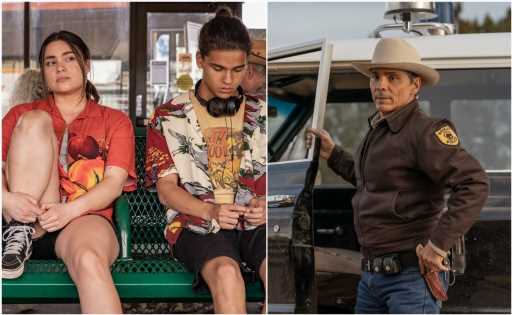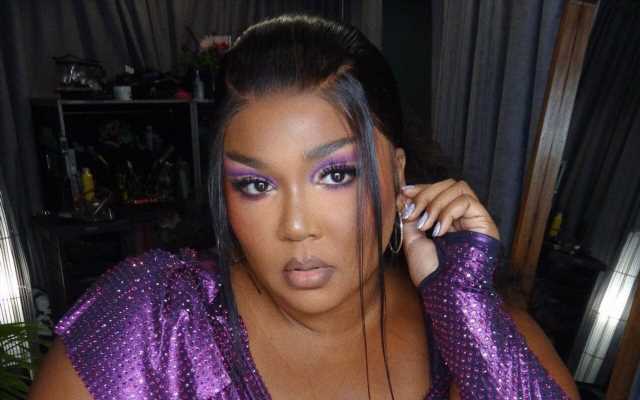Perhaps it’s coincidence, or serendipity, but two of the best-reviewed shows on television happened to both return at the same time with new seasons last week — and both put Native storytelling and Indigenous characters front and center. FX’s “Reservation Dogs” and AMC’s “Dark Winds” have a few things in common — starting, of course, with Zahn McClarnon, who stars as Navajo tribal police officer Joe Leaphorn in “Dark Winds” and recurs as Officer Big in “Reservation Dogs.”
And both also share acclaim from viewers and critics: “Reservation Dogs” sports a 99% positive rating on Rotten Tomatoes’ reviews aggregator, while “Dark Winds” boasts a remarkable 100% ranking. But the two shows come from very different genres: “Reservation Dogs” is a modern-day coming of age dramatic comedy about a group of friends working through the death of one of their own, while “Dark Winds” is a western noir period piece set in the 1970s.
“There’s just more space for a lot of different voices, with television being the kind of Zeitgeist of creativity now,” says “Dark Winds” executive producer/director Chris Eyre, who first broke through with the film “Smoke Signals” in 1998. Of course, Eyre notes that he’s been waiting for this moment for 25 years. “We all thought that the door was going to open up wide after ‘Smoke Signals.’ It’s taken this long, but it’s just amazing that it’s here now. Which is, that the Native voice has a real following, with shows like ‘Dark Winds’ and ‘Reservation Dogs.’”
That growth in Native voices and stories has also included series such as Peacock’s “Rutherford Falls,” and upcoming shows like Marvel’s “Echo,” which focuses on Native character Maya Lopez (Alaqua Cox). “Rutherford Falls” was canceled last year after two seasons, and “Reservation Dogs” is winding up this summer after its third season — something that co-creator Sterlin Harjo said was organic to the narrative. “It’s a story about kids going through a very transitional moment and grief, and I just don’t think that lasts forever,” he says. “To me, the show’s too important to drag out.”
But Harjo says he’s not worried that the exit of “Rez Dogs” will leave a void in Native storytelling on TV. Instead, he’s optimistic that the show has paved a path for others to follow.
“There’s always an ebb and flow, but I feel like what we’ve done with ‘Reservation Dogs’ is that we have many stories to tell,” Harjo says. “It’s sort of limitless and we can go into any genre. So, I hope that with ‘Rez Dogs’ being gone, people will fill that void. I think that we just proved that there’s no limit to what can be told as far as Indigenous storytelling goes.”
Eyre, for example, is keen to develop science fiction stories through a Native lens. “I’d really like to tell Indigenous futurisms,” he says. “How do people exist in 100 years, 200 years, 300 years. When you take Native American characters and you put them in space, and you chart the future, that’s another form of manifest destiny.”
AMC president of entertainment and AMC Studios Dan McDermott also points to the representation both in front of and behind the camera on “Dark Winds,” which is about 90% Native. “We’re enormously proud of this show,” he says. “I can’t overstate how important it is for ‘Dark Winds’ and ‘Reservation Dogs,’ the way the shows have been received and embraced. These days are long overdue, and we’re thrilled to be a part of it. Success always begets success, and it’s going to open up more opportunities for more Native American storytellers to tell stories about their communities. Certainly I think it’s demonstrating that if you build it, they will come.”
“Reservation Dogs” director Danis Goulet says she knows progress and change is not necessarily going to be “a straight, linear road. For so long, we had been advocating to get through the door and this show and its accolades and success really proved what Indigenous storytelling is capable of. I really hope now that we’ve elbowed the door open, that it stays open. It’s really just the start. This is what happens when you put Indigenous people at the helm of our own stories.”
Adds Eyre: “I don’t think I can wait another 20 years for another wave. I think that we have reached a place that we can actually hope that there’s more to come. And I can say that in earnest this time.”
Read More About:
Source: Read Full Article


